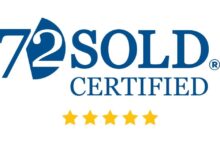/portal.php: Understanding the Purpose, Use, and Benefits of Portal Pages

Introduction
In today’s digital age, websites and online platforms are continuously evolving to meet the needs of users looking for seamless, centralized access to multiple resources. Portal pages, often represented by paths like /portal.php, are one of the key tools in achieving this. A portal page serves as a single entry point, leading users to various interconnected sections of a website. This guide explores what /portal.php represents, its typical uses, how it benefits users and administrators, and what best practices to follow when implementing a portal page.
What is /portal.php?
The URL path /portal.php is typically a file on a web server that provides users with a portal or gateway page, where they can access various resources, tools, or sections of a website from a single interface. Often, is used in content management systems (CMS) or corporate websites to consolidate links, tools, and essential resources for users in one accessible location.
Portal pages like are particularly valuable for websites with extensive content or multiple user types, as they allow different segments (such as customers, employees, or students) to easily navigate to the resources they need.
Primary Uses of /portal.ph
Portal pages serve various purposes, depending on the website’s goals and the target audience. Here’s a closer look at the main applications of /portal.php:
1. Corporate Portals
For companies with internal portals, might provide employees with access to essential resources like payroll, HR documents, project management tools, and company updates. With a single login, employees can find everything they need, improving productivity and making information retrieval more efficient.
2. Educational Portals
Educational institutions often use to offer students and teachers access to resources like course materials, grading systems, and communication tools. A centralized portal streamlines academic processes and ensures students have the materials they need in one place.
3. Customer Portals
Customer-focused websites, such as e-commerce or service-based platforms, may use /portal.php to enable customers to manage accounts, view transaction histories, access customer support, and manage subscription services. By consolidating these functions, customers can easily navigate and manage their activities without confusion.
4. Content Management Portals
Websites that house a large amount of content or provide different content types for different user roles (like subscribers, editors, or administrators) use to serve as the landing page where each role finds their respective dashboards. This organization reduces navigation complexity and enables a tailored experience for each user.
Benefits of Using /portal.php in a Website Structure
Utilizing a /portal.php page brings numerous advantages to both users and website administrators:
1. Centralized Access
The main benefit of a portal page is that it centralizes access to multiple resources. Users don’t have to search or navigate through the website to find what they need. Instead, they can find all links or tools conveniently placed in one location, which saves time and reduces user frustration.
2. Improved User Experience
By providing a well-organized, accessible interface, a portal page like simplifies the user journey. Users enjoy an enhanced experience as they can quickly reach the resources that matter most to them, improving retention and engagement.
3. Security and Access Control
Many /portal.php pages use login authentication to manage user access. This way, sensitive resources are protected, and only authorized users can view certain sections. For instance, an employee portal may require login credentials, ensuring only verified employees access internal information.
4. Efficient Resource Management
For website administrators, makes resource management more efficient. Rather than scattering tools or resources across a website, administrators can organize everything on the portal page. This makes maintenance easier and ensures resources are up-to-date.
5. Tailored Content for Different User Types
Many portal pages dynamically adapt to show users content specific to their role or permissions. For example, a teacher’s portal on a school website may differ from a student’s portal. This customization allows users to have a unique, relevant experience without the clutter of unrelated information.
Key Features of an Effective /portal.php Page
To maximize the effectiveness of a portal page, certain features are essential. Here are some core elements of a well-designed /portal.php:
1. Intuitive Layout
A successful should have a clean, intuitive layout that guides users easily to each resource. Dividing content by category or user type helps users locate relevant links or tools quickly.
2. Customizable Sections
Providing customizable sections on allows users to personalize the portal based on their preferences. For instance, an employee portal could allow users to “pin” frequently accessed resources for quicker access.
3. Responsive Design
In a world where mobile browsing is increasingly common,hould be fully responsive. Users accessing the portal from smartphones, tablets, or desktops should have a seamless experience regardless of their device.
4. Integration with Other Systems
Portal pages should integrate with other internal systems like HR, customer relationship management (CRM), and learning management systems (LMS). This integration creates a unified user experience, ensuring users can access all necessary tools from a single portal without the need for multiple logins.
5. Notification Center
A notification center on keeps users updated on important events or messages. For example, a student portal might display reminders for assignment deadlines or upcoming exams. Notifications help users stay informed without the need to check multiple sections of the website.
Best Practices for Implementing /portal.php
Creating a successful /portal.php page requires a combination of strategic design, user-focused layout, and ongoing management. Here are some best practices:
1. Define the Portal’s Purpose Clearly
Before designing the portal, define the main objectives for /portal.php. Is it for internal use by employees, a customer service portal, or a student information hub? Knowing its purpose will help guide the layout and functionalities offered.
2. Use Role-Based Access Controls
In cases where a website serves different user types, implement role-based access. This means that users only see content relevant to their role, simplifying the experience and reducing unnecessary distractions.
3. Maintain Consistent Updates
A portal page is only as effective as its content. Regularly update /portal.php to keep links, resources, and information current. For instance, remove outdated content or adjust resources based on feedback to keep the page relevant.
4. Optimize for Performance
Since a portal page is likely to be frequently visited, it should be optimized for speed and performance. Compress images, limit the number of redirects, and keep the code clean to ensure fast loading times.
5. Ensure User Security
For portal pages that require login credentials, prioritize security by enforcing strong password requirements, enabling two-factor authentication (2FA), and regularly updating security protocols. This is especially important if sensitive data is accessible through the portal.

Examples of Common Portal Page Applications
Many industries make use of portal pages like /portal.php to create accessible digital hubs. Here are some notable examples:
- Corporate Portals – Designed for internal communication and productivity, featuring HR tools, document storage, and communication platforms.
- Student and Academic Portals – Consolidates course materials, assignments, announcements, and schedules for academic institutions.
- Customer Service Portals – Allow users to submit tickets, access FAQs, and manage account settings or subscriptions.
- Healthcare Portals – Provide patients with access to their health records, appointment scheduling, and billing information.
Conclusion
In an era where efficiency and user experience are paramount, portal pages like /portal.php have become essential for many websites. From providing centralized access to promoting efficiency and enhancing the user journey, /portal.php serves as a valuable asset in creating organized and effective online experiences. By understanding its purpose, implementing best practices, and customizing it for your audience, you can harness the potential of a portal page to improve website functionality and user satisfaction.
Whether for internal company use, customer support, or academic purposes, plays a crucial role in simplifying navigation and ensuring that users can quickly access the resources they need. In designing your portal, remember to prioritize clarity, accessibility, and security—creating an interface that meets the evolving needs of today’s digital audience.



